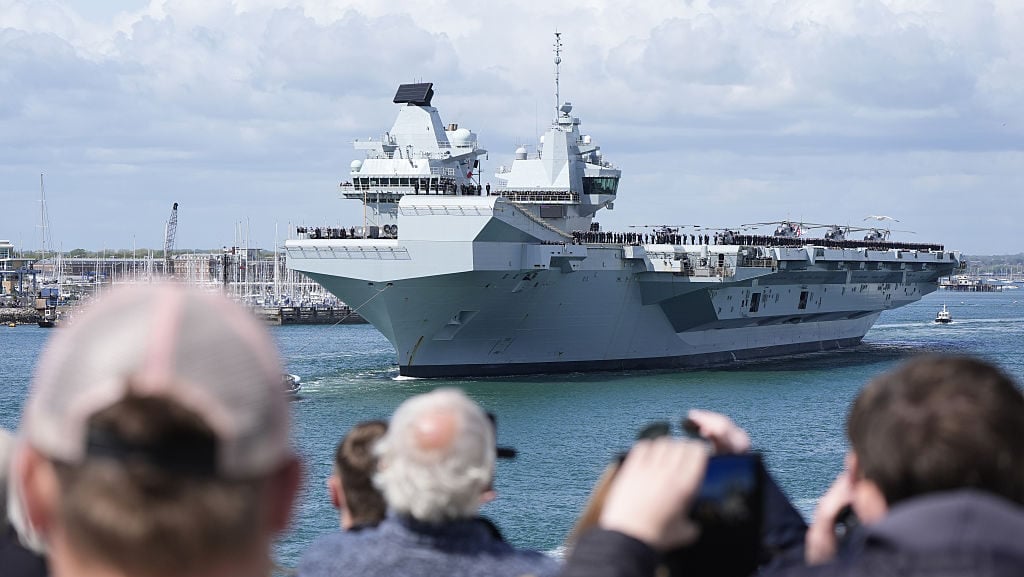
SYDNEY — In a significant military development, Japan is set to reintroduce aircraft carriers into its naval fleet for the first time since World War II. This move comes as the country retrofits two helicopter-destroyers, the Izumo and Kaga, to accommodate F-35 stealth fighters. While these vessels are not as large as the U.S. Navy’s super carriers like the Gerald R. Ford, their presence marks a notable shift in the Indo-Pacific maritime landscape.
The announcement comes as aircraft carriers, both traditional and smaller variants, increasingly navigate the waters of the Indo-Pacific region. This trend was visually captured in a photograph shared by the United Kingdom on social media, showcasing a formidable lineup of naval power: the HMS Prince of Wales, the American Nimitz-class USS George Washington, and Japan’s JS Kaga, alongside the U.S. Navy’s amphibious assault ship USS America, all sailing in the North Philippine Sea on August 10.
The Growing Interest in Aircraft Carriers
At a time when the utility and vulnerability of aircraft carriers are subjects of intense debate, experts suggest that their deployment in the Indo-Pacific is on the rise. Bryan Clark, a defense expert at the Hudson Institute, attributes this trend to several factors. He notes that militaries worldwide recognize the strategic value carriers provided the U.S. in the Middle East, where land bases were vulnerable or restricted by host nations.
“I think there is rising global interest in carriers, driven by a couple factors,” said Bryan Clark. “Militaries see the value they provided the US in the Middle East over the last few years when land bases were either vulnerable to attack or subject to host nation restrictions.”
Clark also highlights the influence of China’s expanding carrier fleet, which poses potential threats to international sea lanes and national interests.
The Many Carriers in Pacific Waters
Jennifer Parker, a former Royal Australian Navy officer now at the University of New South Wales, observes a global shift towards carriers, whether traditional or drone-based. She notes that most regional countries, aside from China, are pursuing smaller tactical carriers. Currently, the U.S. operates 11 full-sized aircraft carriers, with six stationed in the Indo-Pacific, including one based in Japan’s Yokosuka port. China has three, and India operates two carriers.
In addition to super carriers, the U.S. Navy also employs amphibious assault ships, considered aircraft carriers by many nations despite their smaller size. South Korea is contemplating a drone carrier after its traditional carrier plans stalled. Meanwhile, China may be venturing into hybrid carriers, potentially developing a small drone-dedicated vessel at Jiangsu Dayang Marine shipyard.
Beyond regional developments, carriers from Britain, France, and Italy have visited the Indo-Pacific, signaling a shared commitment to a Pacific free from coercion by China. This is part of the European Carrier Group Interoperability Initiative (ECGII), established in 2010, which promotes joint naval exercises and regional presence.
The Carrier Debate
The resurgence of aircraft carriers, even in tactical forms, coincides with ongoing debates about their relevance in modern warfare. Critics argue that advancements in drones and hypersonic missiles could render carriers vulnerable. In January, Pete Hegseth, before becoming the U.S. Defense Secretary, controversially suggested that China could potentially sink all U.S. carriers within 20 minutes.
However, many defense experts contest this view, emphasizing the robust defensive capabilities of carrier groups, including submarines, surface ships, and self-defense systems. Jennifer Parker argues that while carriers face new threats, they remain crucial for achieving sea control, which is inherently linked to air control.
“While there has been an ongoing discussion about the vulnerability of carriers, this discussion is often misguided,” Parker stated. “Developments in cruise, ballistic missiles and UAVs don’t mean carriers are obsolete; they mean a greater focus now needs to be placed on capabilities, tactics and doctrine that can provide protection.”
South Korea’s interest in carriers is driven by the threat from North Korea, as Bryan Clark explains. With Korean airfields under threat, a carrier could offer strategic advantages by launching aircraft from safer distances.
Strategic Challenges and Financial Considerations
Despite their strategic value, carriers face inherent challenges. Analyst Felix Chang points out that carriers are difficult to conceal due to their operational footprint and electronic signatures, which can reveal their presence. This is particularly true for light carriers, which may struggle in environments with advanced air defenses.
Clark suggests that many nations value carriers for operations in open oceans, away from major threats but where land bases are unavailable. For instance, China’s carriers likely aim to protect sea lanes through the Indian Ocean, while U.S. carriers have proven effective in the Middle East and Atlantic.
Financial constraints also loom large. Chang notes that even the U.S. struggles to maintain its carrier fleet, and Japan faces budgetary pressures exacerbated by currency depreciation. China, too, may encounter financial hurdles if it pursues a fourth, potentially nuclear-powered, carrier.
“Even the United States, with its large defense budget, is struggling to maintain its current numbers of operational strike carriers and amphibious ships,” Chang observed. “China will not be immune to mounting financial considerations if it proceeds with plans to build a fourth aircraft carrier.”
Should China advance its nuclear-powered carrier program, it could trigger a regional arms race, prompting other nations to reassess their naval aviation strategies.
As the Indo-Pacific continues to evolve as a strategic theater, the role of aircraft carriers remains a focal point of military planning and geopolitical strategy, underscoring their enduring significance in global naval operations.






